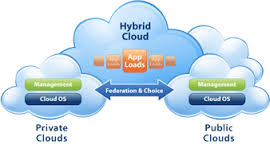
As a fact, almost all professionals in the IT field are focusing on employing the cloud-based services. This is because cloud computing facilitates businesses to access swiftly the public as well as private resources on-demand, an ability that overcomes the time and other issues linked to the physical infrastructure. However, the greatest complexity faced in implementing the cloud environment is integrating the various hardware and software components of different vendors.
Moreover, even if the integration issue is solved, the resulting system can be quite costly and difficult to operate. As a result, the motive for choosing cloud can be quashed easily. Therefore, it is better to assess the cloud platform that you choose, before you start working on it. There are different evaluation criteria for cloud management platforms but some of them are common to all. These criteria are nothing but the setup requirements for cloud, which one needs to fully recognize and comprehend their significance for proper cloud management.
Support for Mixed Infrastructure
A cloud platform must be able to support several environments such as physical, public, private, virtual, and cloud. This should happen without compromising with your existing data center. Irrespective of the cloud platform you select, it should be able to fetch the most from the solutions available from several vendors for integrating with existing systems. The solution implemented should offer a way to adapt to any open source system or an existing proprietary system by supporting both the old and new technologies.
Agile Workload and Resource Management
A cloud-based system should be highly scalable to respond to a few hundred to a few thousand people at any point of time. In order to be responsive and expandable system, the system must know about the workload as well as resource availability. Moreover, the strategies to manage the workload and resource availability parameters must be available to the concerned IT team, especially during the peak periods. This requires proper configuration whose dearth can lead to potential failure due to downtime and outage.
Preset Configuration Control
Cloud infrastructure demands more support for dynamic environment architectures as well as configurations, as it relies drastically on virtualization. This is the main reason why automated configuration management processes keeping an eye on control components are essential. Configuration management is influenced heavily due to the inclination towards virtualization. For example, the Configuration Map tends to be more dynamic due to the virtual machines transitioning amongst the hosts resulting in initiation and shutdowns. Further, the automated tools ensure minimum manual participation during the maintenance and deployment. These tools along with the virtual infrastructure result in an encapsulation layer that restricts the visibility into the configuration of a company’s system. This can affect the overall performance and availability. In order to prevent this, new requirements for configuration has come up, including support for dynamic environment architecture, automation of configuration processes, and tight integration with automation tools. As a result, new, matured tools will come up in the market, which will be an intrinsic part of cloud platforms and virtualization.
Bio: Vidas Alexander is a team leader in an IT firm in Ontario, which is famous for dynamic cloud-based solutions for different industries. He is into this field since past 1.5 years. Prior to that, Vidas was into enterprise software domain during which he obtained a diverse experience of more than five years. Right now, he has been assigned a cloud-based project for which he is much excited about. In order to execute this efficiently, Vidas has started his research on the cloud technology. He has started to explore about topics such as cloud tools, hybrid cloud, and evaluation criteria for cloud management platforms.